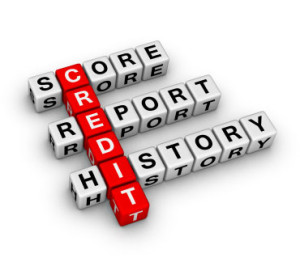There are a couple of things that you need to know about having less than perfect credit. The first is that there are more people out there whose credit profiles are not nearly as awesome as they’d like them to be—so there is no reason to feel embarrassed about your score or situation. The second is that credit scores change all the time. The credit you have now is not the credit you’ll have next month or next year. This means that you can fix your situation.
Step One: Finding Your Starting Place
The first thing that you need to do is get copies of your credit reports. You are entitled to at least one free credit report every year from each of the three major credit bureaus: Equifax, Experian, and TransUnion.
It’s important to understand that accessing your credit reports does not necessarily mean learning your credit score.
Once you have your credit reports, you’ll want to make sure they are absolutely accurate. This means going over every detail and making sure that it is correct. If you see something that is even a little bit off, you need to dispute that detail with the reporting bureau. In addition to raising your credit score, it is important to get a clear and accurate idea of how much work you are going to need to do.

Step Two: Fixing Bad Credit
Most of the time, the key to fixing bad credit is getting back on track with your bills. Don’t worry about the payments you’ve missed in the past. You can’t do anything about those now. What matters is that you create a positive and steady payment plan for your future. It is also important that you work very hard to reduce your debt to income ratio. Your debt to income ratio is a big factor in your overall credit score. It is what lenders look at when you apply for loans or financing.
The best way to reduce your debt to income ratio is to increase the amount of money you send to your creditors each month. By now you already know that you need to pay more than the minimum amount due if you ever want to get out of debt. Even $5 more toward that balance is a good thing. A better way to do it though is to take your minimum amount due, add however much you are charged in interest every month, and then tack at least $10 (though 10% is better).
If you have a lot of bills or if you’re worried that you won’t be able to afford to make even your monthly payments each month, don’t panic. Many creditors are willing to work with clients when it comes to things like interest rates and minimum amounts due. They’d rather reduce your interest rate than lose you as a customer. If this process intimidates you (or if you don’t have time to call and haggle with all of your creditors), a credit repair service can reduce the stress of the process. These companies negotiate with creditors on your behalf and help you set up budgets and payment plans that you can afford to keep.
Step Three: Building Good Credit
Don’t wait until you are out of debt to work on building good credit for yourself. You need to work on both simultaneously. Yes, paying down your debt and creating a positive repayment history will accomplish part of this goal. The other part, though, is proving that you can handle credit responsibly. The easiest way to do this is to open a secured line of credit with your bank.
If you are willing to work hard, you can fix your credit. It won’t happen overnight. It might take a few years—but it will happen.

Leave a Reply